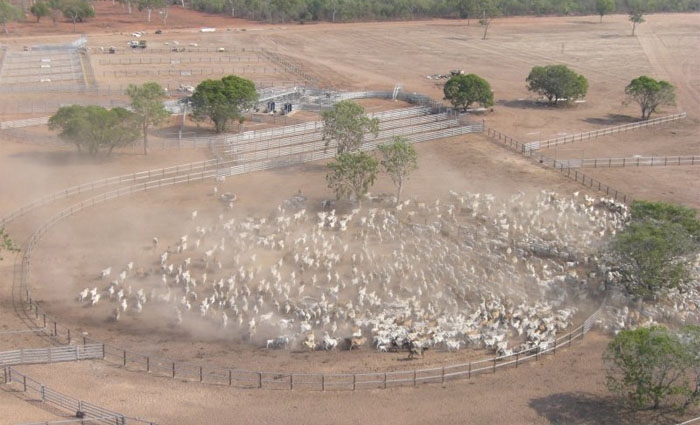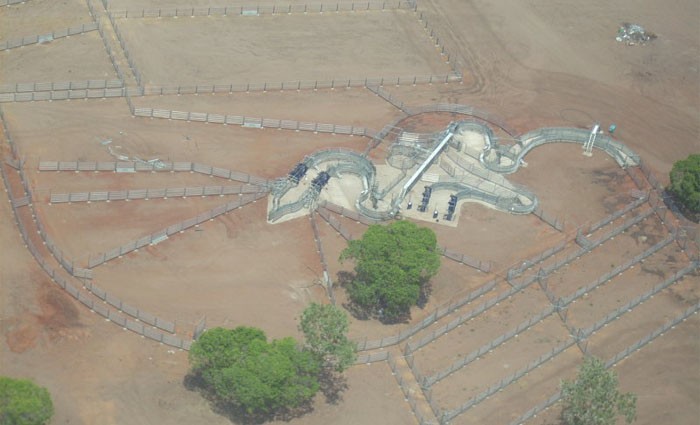Our unique infrastructure
Host: Legune Station
Written by Belinda Rasheed – Manager, Legune Station.
There are a few things that set Legune apart from other cattle stations, the most significant being our infrastructure. Collectively, the owners and managers believe developing agricultural land to its full potential is a responsibility which comes with the privilege of owning and running a cattle station.
 Cattle waiting to be processed at Bundaberg Yards, with a ‘turkeys nest’ (above ground man-made dam, replenished through a bore system) in the distance.
Cattle waiting to be processed at Bundaberg Yards, with a ‘turkeys nest’ (above ground man-made dam, replenished through a bore system) in the distance.
Bundaberg yards are state of the art, and can hold 20,000 head in total. The impressive investment was developed and custom built in the early 2000’s.
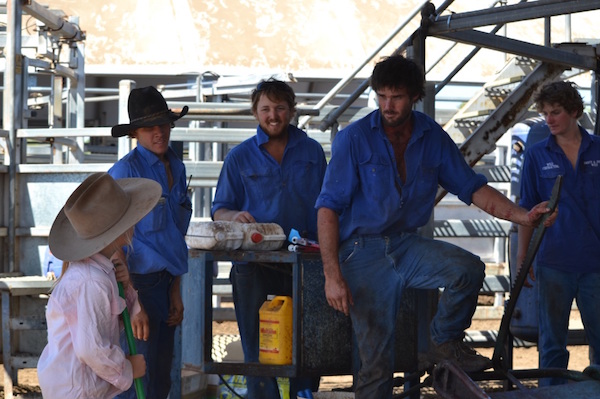
Visually, the dam is our most unique distinction.The 55,000 megalitre dam is set just behind the homestead, which makes for a beautiful landscape, and most significantly, our 2nd ‘Wet Season’ between 1st and 2nd round muster. This water supply allows for flexibility and diversity in future years of production, with a diverse range possibility . . .

The purpose built dam’s floodgate opens onto 60,000 ha of floodplain, covered with native and planted grasses, which then replicates the wet season by regenerating the soil and replenishing feed for cattle.

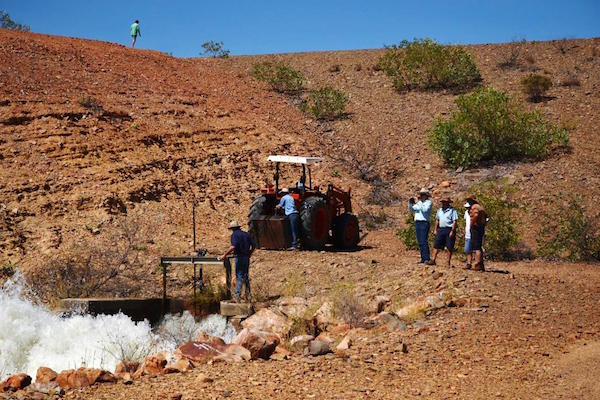
We also border the Timor Sea, which makes for more great landscapes (and fishing), however it means we have to manage salt flats and king tides . . .
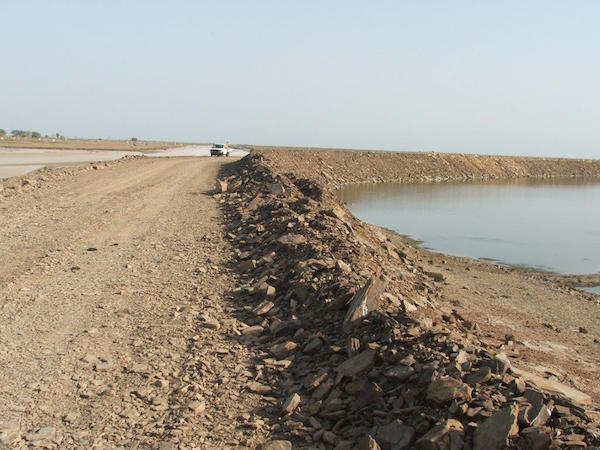
Point C and D were created, two man made blockades. Both were developed to restrict salt water from coming onto valuable grazing pasture, and to hold fresh water for use after a wet season, allowing us to maximise productive land and heighten our water sustainability.

